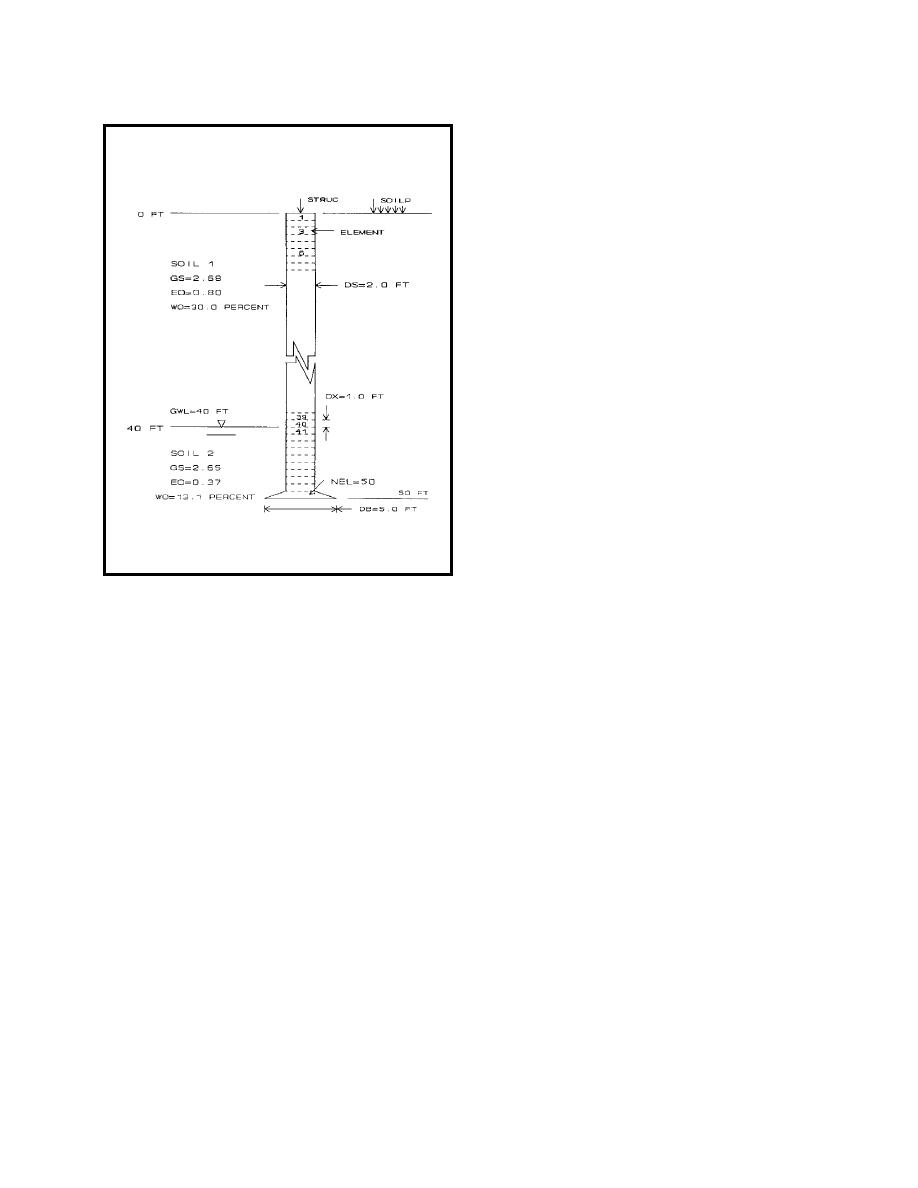
EI 02C097
01 Jul 97
two soils is 0.9. A high " was selected because expansive
soil increases pressure against the shaft, which may raise the
skin friction.
(2) Load-transfer models. The Kraft, Ray, and Kagawa
skin friction and the Vijayvergiya base load-transfer models
(K = 8) were selected. Two points for the elastic modulus of
the shaft concrete were input into the program.
(3) Results. The results are plotted in Figure C-2 for a
pullout force of 300,000 pounds. Results of the computation
placed in files "LTROUT.TXT" are shown in Table C-5.
(a) Total and base ultimate bearing capacity is about
1,200 and 550 kips, respectively (Figure C-2a). Base and
total capacity is 250 and 600 kips, respectively, if settlement
is limited to 0.5 inch, which is representative of an FS of
approximately 2.
(b) The distribution of load with depth, Figure C-2b, is
a combination of the shapes indicated in Figures 3-15 and
3-16, because both pullout and uplift forces must be resisted.
(c) The shaft will heave approximately 0.7 inch,
while the soil heaves more than 11 inches at the ground
surface (Figure C-2c).
b. Downdrag. Table C-6 illustrates input data required
Figure C-1. Schematic diagram of soil and pile
to solve for the performance of the same drilled shaft and soil
elements
described in the previous example problem, but the soil is
wetter with a much lower swell pressure. Soil shear strength
is assumed not to change significantly from the previous
with a 5-foot-diameter bell. Soil beneath the shaft is
example. This shoft is subject to a 150-kip load in
nonexpansive. The shaft is subject to a pullout force of 300
addition to the downdrag forces from the settling soil.
kips. Refer to Figure C-1 for a schematic representation of
this problem.
(1) Bearing capacity. The alpha skin friction and
local shear bearing-capacity models are selected similar
(1) Bearing capacity. The alpha skin friction and local
to the previous example. Option to input the reduction
factor α's are 0.55 and 0.3 for the surface and deeper
shear base capacity models are selected. Option to input the
reduction factor " (I = 6) was used. The selected "'s for the
soils, respectively.
C-5



 Previous Page
Previous Page
